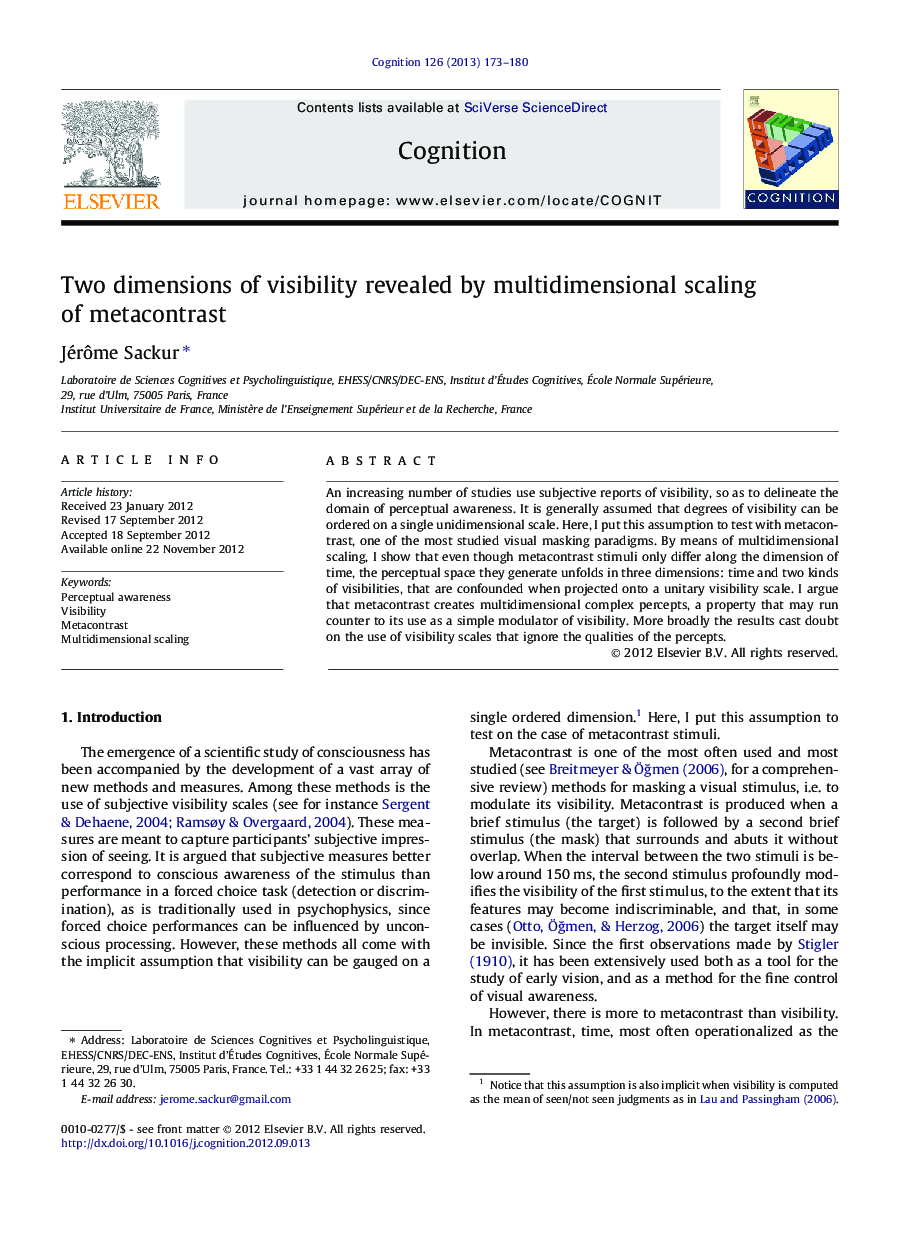| Article ID | Journal | Published Year | Pages | File Type |
|---|---|---|---|---|
| 926452 | Cognition | 2013 | 8 Pages |
An increasing number of studies use subjective reports of visibility, so as to delineate the domain of perceptual awareness. It is generally assumed that degrees of visibility can be ordered on a single unidimensional scale. Here, I put this assumption to test with metacontrast, one of the most studied visual masking paradigms. By means of multidimensional scaling, I show that even though metacontrast stimuli only differ along the dimension of time, the perceptual space they generate unfolds in three dimensions: time and two kinds of visibilities, that are confounded when projected onto a unitary visibility scale. I argue that metacontrast creates multidimensional complex percepts, a property that may run counter to its use as a simple modulator of visibility. More broadly the results cast doubt on the use of visibility scales that ignore the qualities of the percepts.
► The perceptual space of metacontrast is tridimensional. ► Duration is the main perceptual dimension. ► Visibility is two-tiered. ► Short durations metacontrast stimuli yield integrated percepts. ► Long durations metacontrast stimuli yield segregated percepts.
